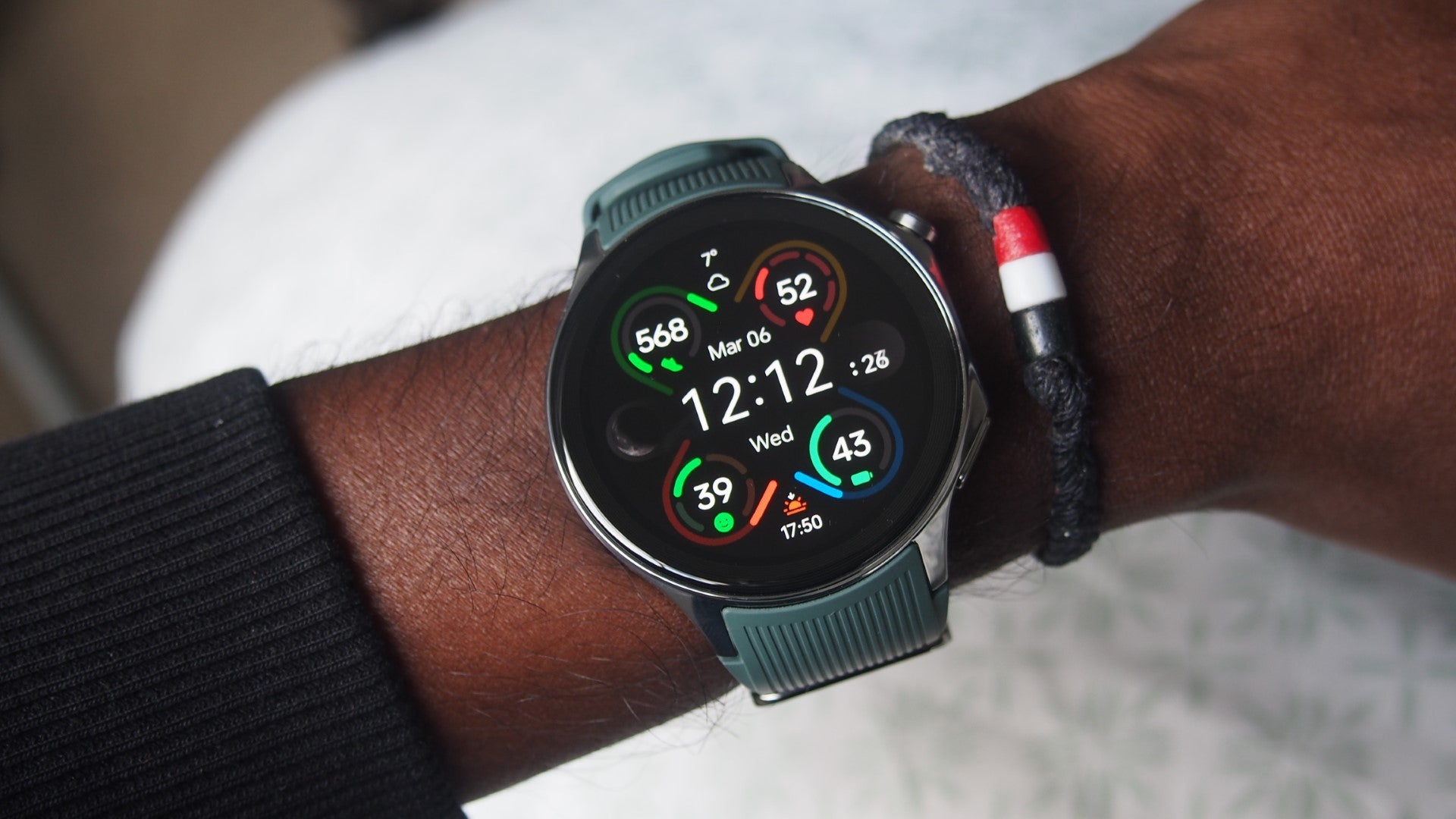Garmin Instinct 2 Review
An outdoor watch with navigation, plentiful tracking modes and decent battery life


Verdict
The Garmin Instinct 2 might not have the fully fledged features of Garmin’s Fenix series, but if you’re looking for an outdoor watch with navigation, plentiful tracking modes and decent battery life – wrapped up in a light, playful design – then the Instinct 2 is well worth checking out.
Pros
- Slimmer design
- Better battery life
- Added training insights and suggested workouts
Cons
- Still no full mapping support
- Similar tracking experience to Instinct
- No real improvement to screen
Availability
- UKRRP: £299.99
- USARRP: $399.99
- EuropeRRP: €349.99
- CanadaTBC
- AustraliaTBC
Key Features
- Packed with important health metricsIn addition to 24/7 heart rate monitoring, this watch can measure VO2 Max, blood oxygen levels, leep tracking, and women’s health tracking
- Multi-GNSS supportThis watch has access to multiple global navigation satellite systems, including GPS, GLONASS, and Galileo
- Incident detectionIf this wearable detects a potential emergency health incident, then your name and location will be sent to your emergency contacts via the Garmin Connect app
Introduction
The Garmin Instinct 2 is technically the third iteration of Garmin’s outdoor watch, following the original Instinct and the Instinct Solar, and it sits below the company’s Fenix series of watches.
While it doesn’t deliver the same level of features included with the Fenix, it does still offer navigation support and is packed with sports modes to track outdoor and indoor exercise. In addition, with the Instinct 2, Garmin bolsters the training analysis and smartwatch features, to make this device more useful overall.
With prices starting at £299.99/$399.99, the Instinct 2 series is up against watches such as the original Polar Grit X and the Coros Apex.
Design
- 45mm size case; 0.9-inch x 0.9-inch, 176 x 176 display
- 10-ATM water rating
- Five different editions available
In terms of looks, the Instinct 2 doesn’t deviate hugely from the Instinct and the Instinct Solar. However, Garmin is promising a device that’s thinner and, on paper, appears to come with a better screen, too.
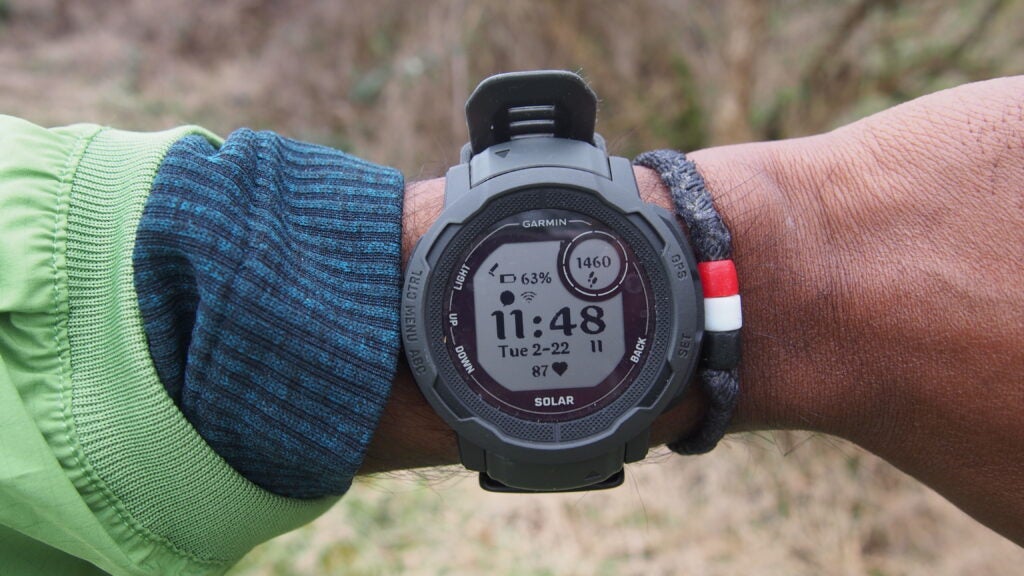
There are five different versions of the Instinct 2 available, and 20 colour options in total, including the cheapest Standard, non-solar version and – amazingly – a Dezl edition that’s designed for truckers. I had the standard Instinct 2 with solar, which comes with a polymer case and a 22mm silicone strap.
You’re getting a 45mm case, as you did with the previous Instinct, and Garmin also adds a smaller Instinct 2S model, which reduces that case size to 40mm, for those who feel the Instinct 2 is a little too big for their wrist. For me, the 45mm Instinct 2 didn’t feel like a beast of a watch to wear; but it’s always good to see Garmin offering options.
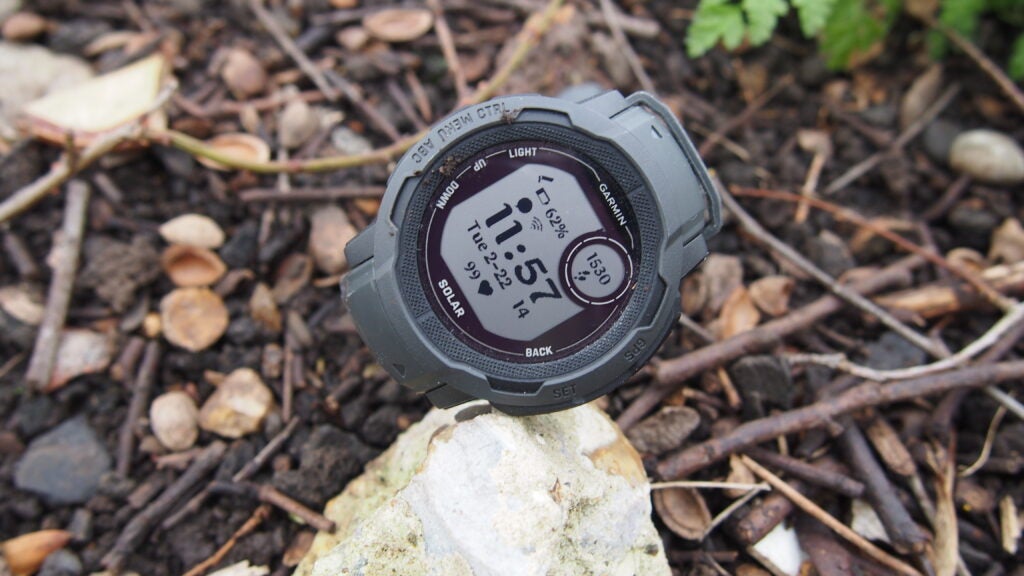
At 53g, the Instinct 2 weighs the same as the Instinct Solar, and that polymer body means this isn’t a watch that weighs heavy on your wrist. Garmin has slimmed down the case with this model, from the Solar’s 15.3mm to 14.5mm, and it’s this slightly more slender frame that’s most noticeable over the last-generation Instinct.
You’ll find five nicely textured buttons dotted around the case that sit close to the case body, and a 0.9-inch x 0.9-inch, 176 x 176 transflective display. While the latter is a slight bump up in resolution over the previous Instinct, I can’t say that I noticed a significant difference in visibility or performance compared to the Instinct Solar.

Garmin still features a dial screen in the top right-hand corner of the face, which displays information such as heart rate or elevation during workout tracking, and data such as daily steps outside of it. On top is a Power Glass lens, which sits more prominently over the screen to offer the solar-powered battery boost.
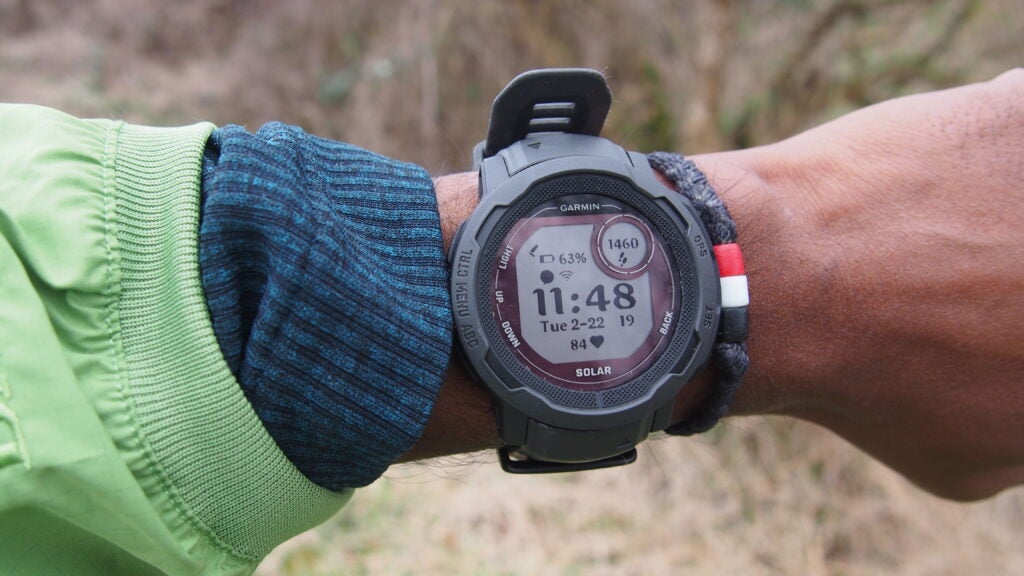
It’s a screen setup that still feels as though it should be a pain to use, making things feel cramped on-screen. However, it actually works surprisingly well and it won’t take you too long to become accustomed to the its approach.
Garmin also delivers the same waterproof rating across all the Instinct 2 models, so this range of watches is fit to be submerged in water up to 100 metres in depth.
Tracking and Features
- More preloaded sports apps including golf
- Support for Garmin Pay and Connect IQ
- Breadcrumb navigation
The Instinct 2 is an outdoor watch first and foremost, and that means it’s capable of tracking activities such as climbing, hiking and skiing. Everything you could do on the Instinct and Instinct Solar remains. The Instinct 2 still offers point-to-point navigation and the ability to follow breadcrumb trails in real-time, and view useful information such as sunrise and sunset times.
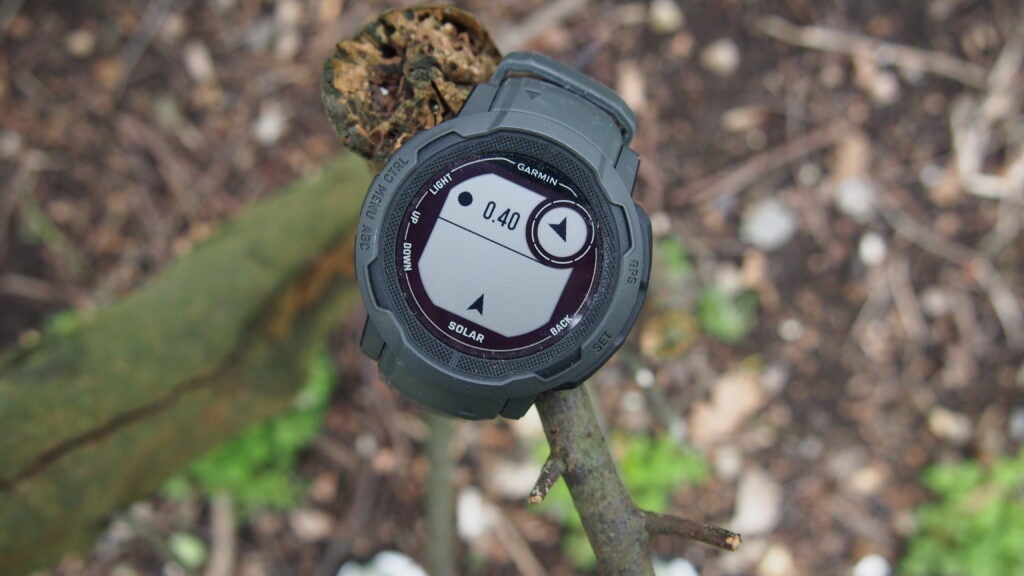
Neither does this watch neglect the duties that other Garmin sports watches deliver so well, now offering analysis of workout data to better inform you on when you should head out for your next run, or partake in a tough training session.
The Instinct 2 continues to cover running, swimming (pool and open water) and cycling, and now adds a golf mode, too, to make it more useful for those wishing to squeeze in a round. The tracking experience feels very similar to the Instinct and the Instinct Solar in terms of the core stats available, as is interaction during activities.
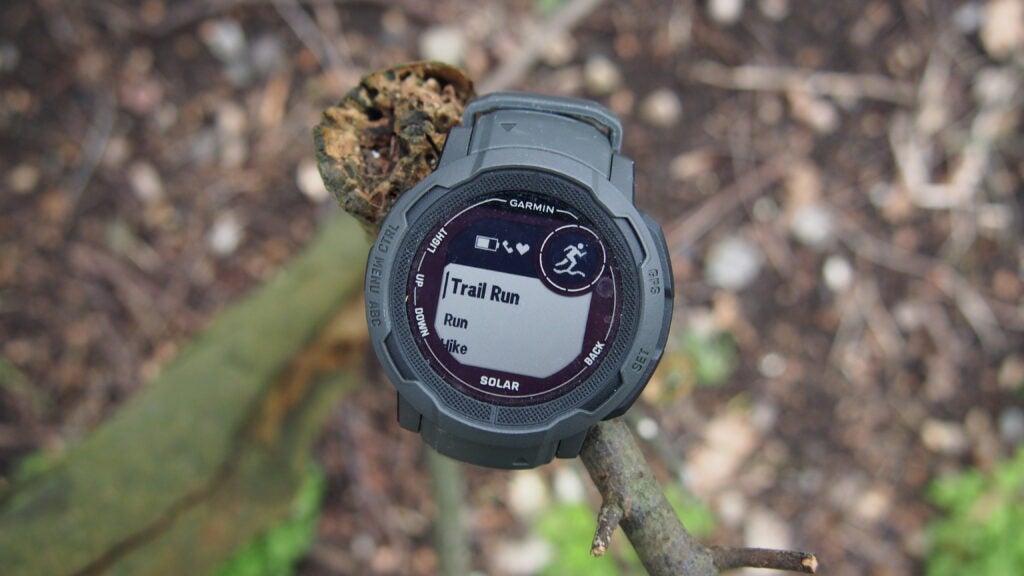
GPS, Glonass and Galileo satellite support remains, which offers distance tracking on a par with the Instinct Solar and the Garmin Epix Gen 2 on our runs, hikes and walks. It doesn’t quite match the new, more accurate multi-band GNSS support available with the Epix, but the Instinct 2 does a good job overall.
There are Garmin’s ABC sensors (altimeter, barometer and compass) for an extra hit of outdoor data, and Garmin’s Elevate heart rate monitor is on board to offer reliable heart rate tracking for steady-paced workouts. However, it does inevitably falter in high-intensity scenarios, as do others with an optical sensor setup. Fortunately, it’s possible to pair the Instinct 2 with an external heart rate sensor, and that connectivity support also extends to foot pod sensors for more advanced running metrics.
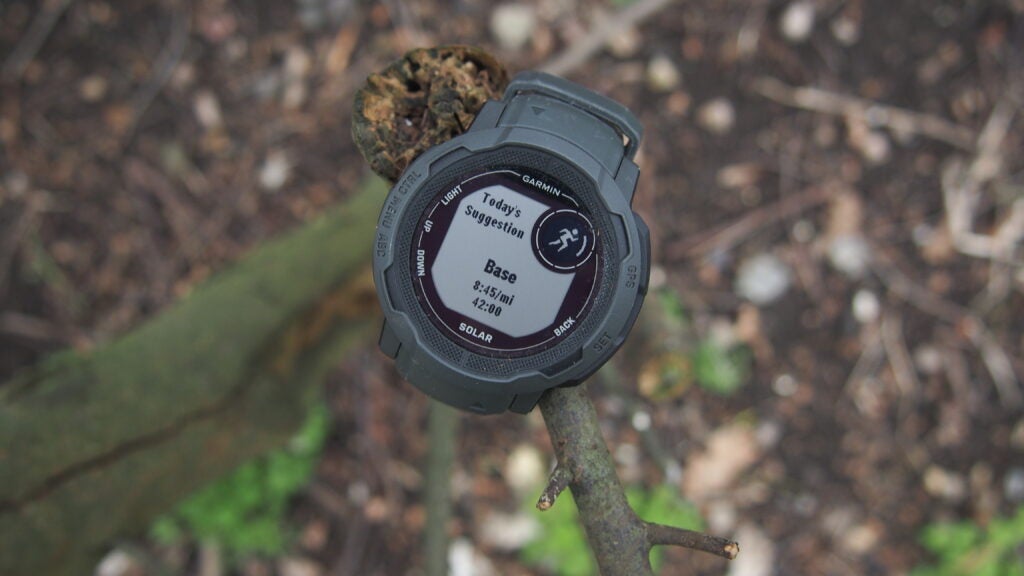
A Pulse Ox sensor is included, too, to measure blood oxygen levels continuously, or during sleep, but note that doing so will make a noticeable dent in battery life.
Garmin has now added training insights and features that appear on its Forerunner watches. You can delve into training effects, status and load data for individual activities on the watch, and delve deeper into trends in the Garmin Connect app.
There’s now a recovery advisor and daily suggested workouts here, too. Following a three-hour marathon training run, I tried to set the device to track a run; it recommended a very slow 10-minute pace recovery run, which I’d say was a useful suggestion. While you may not wish to wholly live by the advice and guidance on offer, I did at least feel that the device was in tune with my training.
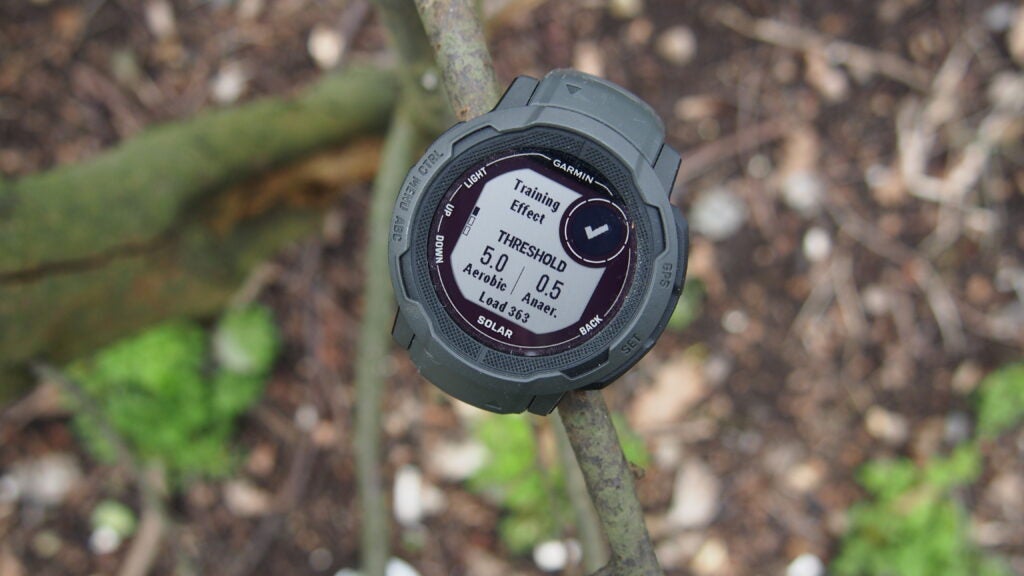
For more niche outdoor pursuits, the experience of using the Instinct 2 feels identical to the Instinct. Navigation support is easy to use, if lacking the richer mapping support available with Garmin’s Fenix series. It’s a shame Garmin hasn’t found a way to offer a more detailed mapping experience here.
There are extras available, if you opt for some of the other versions of the Instinct 2. The Surf editions watches come with kiteboarding and windsurfing profiles, with Surfline offering detailed insights on the conditions for surfing. The Tactical edition now includes a kill switch to wipe the watch of all user memory data.
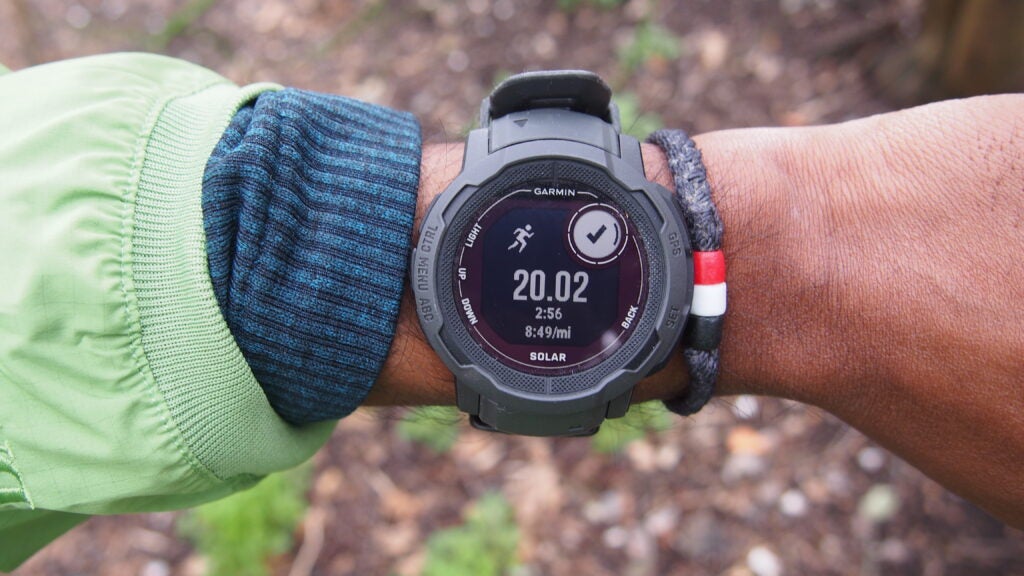
The Instinct 2 has seen Garmin beef up its safety features, now providing access to the indecent detection and assistance features, which help you raise the alarm and send an SOS alert to preferred contacts. However, without any form of LTE support, you will need your phone nearby for the feature to be useful.
LTE isn’t the only smartwatch feature missing with the Instinct 2. There’s no music player either, nor the new voice controls you’ll find on the Venu 2 Plus. Garmin does at least add Garmin Pay to enable contactless payments, and crucially for some, full Connect IQ support.
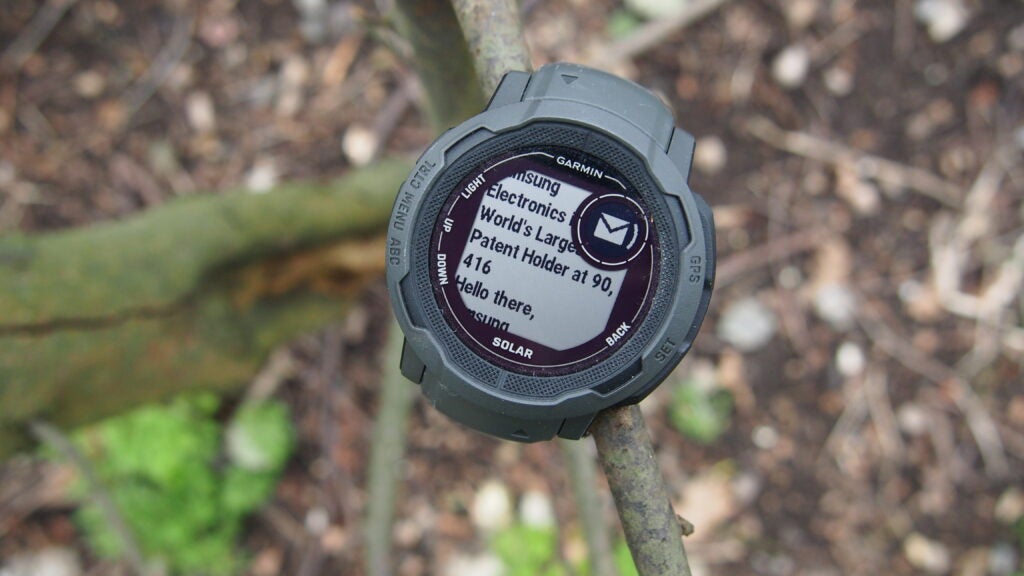
Garmin’s storefront remains on the clunky side. Getting apps or watch faces onto the Instinct 2 certainly isn’t instant; but despite that quirky display, you can find things that are optimised for the Instinct 2’s screen. You can view notifications, too, which don’t feel as awkward to read as it might appear, and calendar and weather support works well here, too.
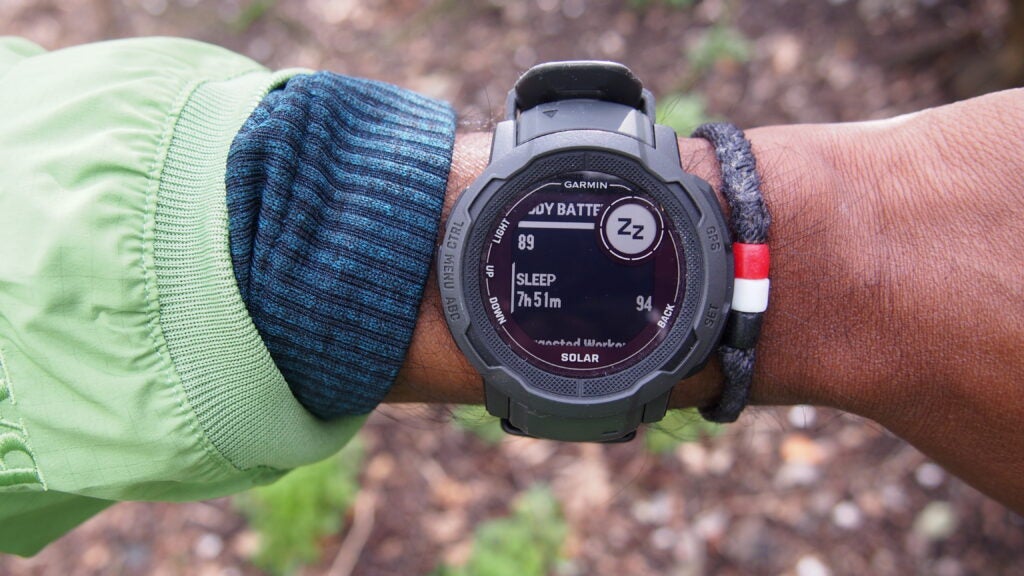
The Instinct 2 can be used as a daily fitness tracker to count your steps, and it now inherits Garmin’s more advanced sleep-monitoring features, with a dedicated sleep widget on the watch and a better breakdown of sleep stages. I still found it overestimated sleep by around an hour, but the sleep stages felt nicely in line with sleep tracking from the very reliable Oura Ring 3.
Battery Life
- Up to 28 days in smartwatch mode; 65 days in battery saver mode
- 30 hours GPS battery life (48 hours with solar)
- Unlimited battery in smartwatch mode with solar
- Power Manager mode
The Instinct was no slouch in the battery department and when Garmin introduced the Solar edition, those battery numbers received a sizable boost. With the Instinct 2, things get even better.
Garmin quotes the Instinct 2 will go for 28 days in smartwatch mode and offers 30 hours of GPS battery life. The original Instinct managed up to 14 days in smartwatch mode and 16 hours of GPS battery life. So those raw numbers alone give you a sense of the improvements made.
Garmin also offers Expedition GPS, Max Battery GPS and battery-saver modes, which Garmin says can deliver unlimited battery life when you factor in solar. What this means is that you need to be wearing the Instinct 2 all day with three hours spent outdoors with it in 50000 lux conditions.
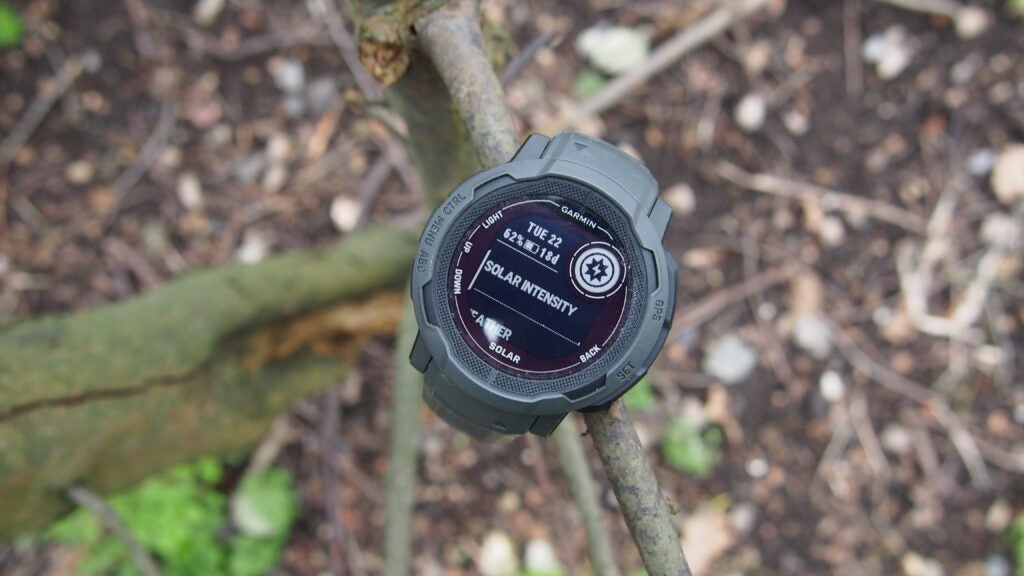
Now we’re not exactly blessed with a lot of sun or nice weather in the UK, so it was impossible to really put that “unlimited” claim to the test. I was able to see how it handles receiving notifications on a regular basis and used the GPS tracking three to four times a week. The battery was able to last well over two weeks. A three-hour outdoor run saw the battery drop by 10%. That would work out to the 30 hours Garmin claims for the Instinct 2.
It’s good to see Garmin include its Power Manager mode from its Fenix series of watches. This delivers superb control over which watch features are in use and when. You can opt for any of the preset Power Manager profiles or create your own.
Latest deals
Should you buy it?
If you want a more affordable outdoor watch For those who can’t stretch to spending big on the Fenix or Epix, and can live without full mapping support, the Instinct 2 makes a worthy adventure partner.
If you want the best outdoor watch out there If you’re looking for the most complete outdoor watch, then consider Garmin’s Fenix or the Coros Vertix 2 instead.
Final Thoughts
The Garmin Instinct 2 is both a better sports watch and a slightly better smartwatch than the previous edition, all while retaining the essence of what made the Instinct an attractive outdoor watch in the first place. Instinct Solar owners might not find huge reasons to upgrade, but dig a little deeper into what Garmin adds here, and original Instinct owners or those wanting an outdoor watch that can’t shell out for a Fenix could do worse than consider the Instinct 2.
How we test
We thoroughly test every smartwatch we review. We use industry standard testing to compare features properly and we use the watch as our main device over the review period. We’ll always tell you what we find and we never, ever, accept money to review a product.
Worn as our main smartwatch during the testing period
Heart rate data compared against dedicated heart rate devices
Side-by-side GPS comparison with our best scoring smartwatches
FAQs
It has support for GPS, GLONASS, and Galileo
Garmin claims that the Instinct 2 can last 28 days in smartwatch mode and can offer 30 hours of GPS battery life, and this seems consistent with our testing
There are incident detection and assistance features on board, which can send your name and location to your preferred contacts; however, as the watch has no onboard LTE support you will need to have your smartphone nearby for this to work




